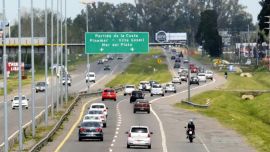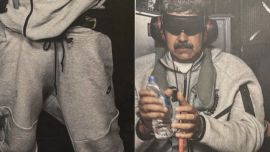Argentine footballer Emiliano Sala and his pilot were exposed to dangerous "potentially fatal" levels of carbon monoxide before their small plane crashed in the English Channel, killing them both, British accident investigators said Wednesday.
"Toxicology tests found that the passenger had a high saturation level of COHb (the combination product of carbon monoxide and haemoglobin)," Britain's Air Accidents Investigation Branch (AAIB) said in a special bulletin.
"It is considered likely that the pilot would also have been exposed to carbon monoxide," it added.
A single-engine Piper Malibu aircraft carrying Sala and pilot David Ibbotson crashed in the Channel on January 21.
Sala, who had played for French club Nantes, was travelling to join his new team, Cardiff City, in Wales.
The Argentine striker's body was recovered from the wreckage two weeks later. Ibbotson's body has still not been found.
The Air Accident Investigations Branch said toxicology tests found "a high saturation level of COHb (the combination product of carbon monoxide and hemoglobin)" in Sala's blood.
It said the level was 58 percent, above the 50 percent "generally considered to be potentially fatal" in a healthy individual. Carbon monoxide above that level can cause seizures, loss of consciousness and heart attacks, investigators said in an interim report.
The report did not say what role, if any, carbon monoxide exposure played in the crash. However, they said it was likely the pilot would have been affected "to some extent."
"In this type of aircraft, the cockpit is not separated from the cabin and it is considered likely that the pilot would also have been affected to some extent by exposure" to carbon monoxide, the investigators said.
The bulletin said that carbon monoxide poisoning was a particular risk in the type of aircraft they were travelling in.
"Piston engine aircraft produce high concentrations of CO that are conveyed away from the aircraft through the exhaust system," said investigators.
"Poor sealing of the cabin, or leaks into the heating and ventilation system from the exhaust can provide pathways for CO to enter the cabin.
"In this type of aircraft, the cockpit is not separated from the cabin and it is considered likely that the pilot would also have been affected to some extent by exposure to CO."
Daniel Machover, a lawyer for Sala's family, said the finding "raises many questions."
"The family and the public need to know how the carbon monoxide was able to enter the cabin," he said. "Future air safety rests on knowing as much as possible on this issue."
Attention had previously focussed on pilot Ibbotson, who it was reported was not authorised to fly at night.
The BBC said Ibbotson was colour blind, which would have automatically disqualified him from night flights.
The AAIB also said the plane carrying Sala was not authorised to make commercial flights.
- TIMES/AFP/AP





















Comments